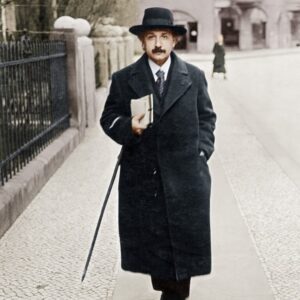Institute for Hybrid Quantum Architectures and Networks
QLCI-CI: NSF Quantum Leap Challenge Institute for Hybrid Quantum Architectures and Networks
Abstract
+ Quantum information science and engineering research has the potential to transform society by developing quantum computers that can complete certain critical tasks faster than classical computers and that provide new applications inaccessible to conventional technologies. For example, a large-scale quantum computer could simulate the properties of energy-harvesting molecules and optimize logistics such as nurse scheduling more quickly and at scales currently unapproachable by supercomputers. However, state-of-the-art quantum devices are too small and lack the features needed to fully realize this promise.
+ Currently, researchers and companies world-wide are pursuing approaches for scaling-up quantum processors using a single-core quantum technology. While there has been progress, the pathway to a useful quantum computer or information network that can outperform classical technologies and provide new use-cases is unknown.
This award reflects NSF’s statutory mission and has been deemed worthy of support through evaluation using the Foundation’s intellectual merit and broader impacts review criteria.
+ The Hybrid Quantum Architectures and Networks center will tackle this challenge by pursuing an alternative paradigm: distributed quantum processing and networks composed of a hybrid architecture. Nodes consisting of a modest number of quantum bits will be connected by quantum links. This modular approach leverages the strengths of different quantum systems and has the potential to unlock quantum information processing at large scales. New distributed applications enabled by this approach may include unconditionally secure information searching and multi-party computation.
+ The center will support robust education, research coordination, community engagement, and industrial partnership programs that will address the quantum workforce challenge at all levels and promote the quantum technologies ecosystem.
+ The center will carry out fundamental science research and engineering to develop a multi-node, full-stack system, ranging from quantum processor design and control to a high-level software application interface. A convergent approach will be pursued by bringing together researchers with expertise from chemistry, computer science, electrical and computer engineering, mathematics, materials science and engineering, molecular engineering, and physics.
+ Three tightly integrated focus research areas will be pursued.
+ The first will center on developing multi-node heterogeneous networks based on proven technologies (atomic ions, neutral atom arrays, and superconducting circuits) with the capacity for distributed processing. This effort will advance hybrid interconnect technologies and deploy multi-node testbeds at each participating institution.
+ The second thrust will develop a distributed computing software stack, multi-node information protocols, and new use-cases that are optimized for these hybrid networks. These protocols, such as private quantum searching and quantum fingerprinting, will leverage the scalability and unconditional network security advantages of a heterogeneous distributed architecture for new applications.
+ The third focus area will encompass creating next-generation protected qubits with enhanced performance and integrating these devices into the center testbeds.
+ All thrusts will employ a co-design approach with collaboration, iteration, and colocation of researchers from different disciplines. The center’s technology, research, and software advancements will provide the foundation for a multi-node heterogeneous distributed processor and network with functionalities that surpass a single-platform architecture.
Content may have been edited for style and clarity. The “+” to the left of paragraphs or other statements indicates quoted material from “Source:” document. Boldface title is original title from “Source:” Italicized statements are directly quoted from “Source:” document. Image sources are indicated as applicable.

